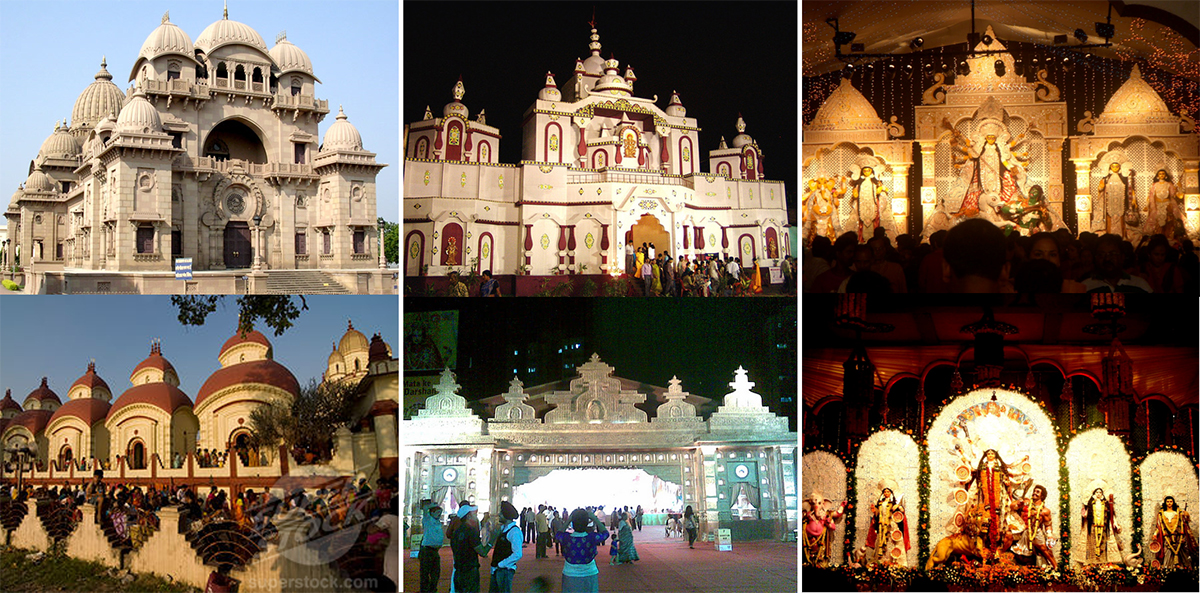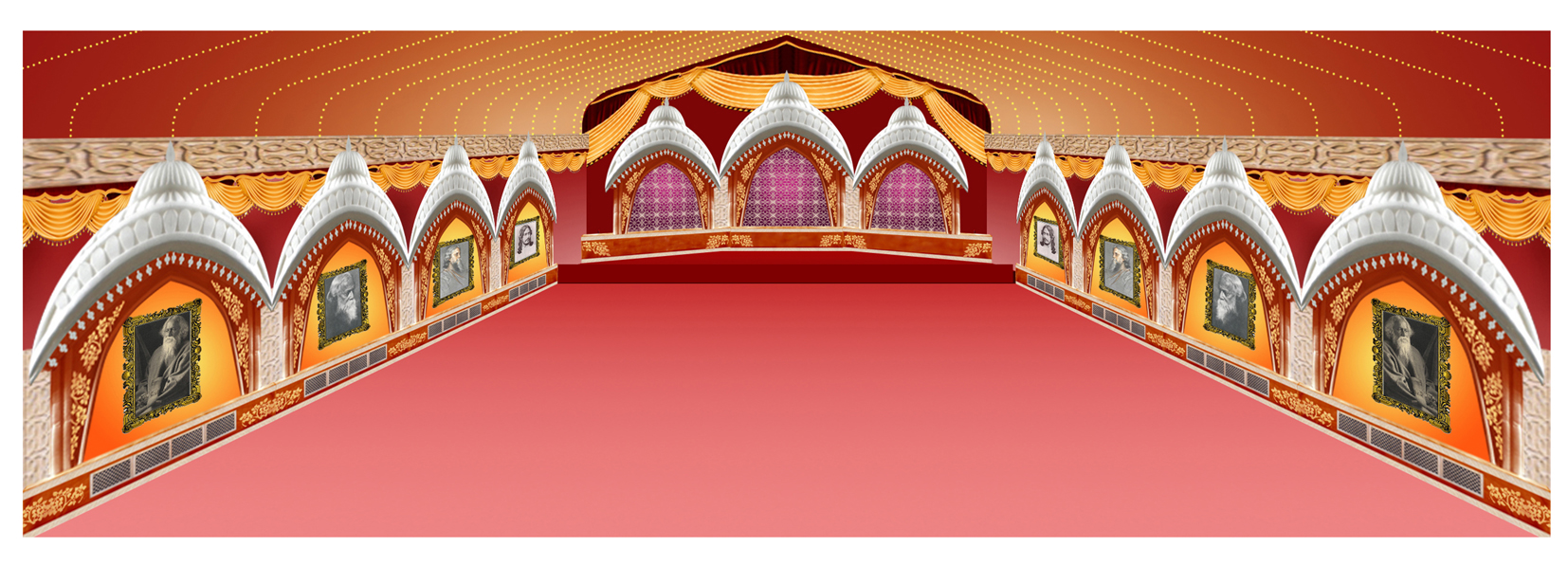Lokhandwala Durga Puja
How do you promote Bengali culture through the celebration of Durga Puja?
BACKGROUND
The Design Company was responsible for creating the pandal for the 17th Lokhandwala Durgotsav (Durga Puja). The festival is a celebration of the annual Hindu festival that celebrates the victory of Goddess Durga over the evil buffalo demon Mahishasura, epitomising the victory of Good over Evil.
Temporary structures (pandals) that house the idols are erected for the duration of the festival every year.
Keeping true to the festival's roots in Bengali culture, craftsmen had been called from Calcutta to create a traditional looking, sustainable structure using bamboos and cloth that could be re-purposed once the event was over.
The interiors were inspired by West Bengal's and Orissa's temple arches, with portraits and compositions of Rabindranath Tagore (a Bengali polymath who reshaped Bengali literature and music, also responsible for penning the Indian National Anthem) were hung to celebrate his 150th birth anniversary.
The event was visited by about 50,000 people per day and was featured in some of the leading newspapers in the country. (http://bit.ly/29z0clP)
THE PROJECT
Temples in Bengal, other Pujo pandals and past Lokhandwala Durga Puja Pandals were studied.
The layout of the event.
The proposed design was inspired by the arches of the temples, matching the exterior of the structure.
The language was extended to the gate with space for sponsor's advertising/branding.
The setup was built over a muddy plot towards the end of the monsoon season. Starting with the platform to support the weight of at least 500 people at a time, workers clocked 12 hours a day to put up the 50’ x 80’ pandal using eco-friendly materials as far as possible.
The exterior of the 'Pandal', made to resemble traditional temples in the West Bengal, India.
The idols are inside this while it is flanked on either side by street food stalls and traditional markets.
The open central space allowed for 'Dhunuchi nritya' or ‘the dance with effervescent smoke' (a traditional dance form from Bengal) to be performed in front of the idol to the sound of dhak, the traditional drums.
The single stepped platforms allowed the musicians performing for the 'Dhunuchi nritya' to start their piece on the platform before stepping down and blending into the crowd.
The interior of the 'Pandal'
ROLE + COMPETENCIES
RESEARCH • CONCEPT DEVELOPMENT • SPATIAL DESIGN • OVERSEEING EXECUTION • DOCUMENTATION
Project for The Design Company
STAKEHOLDERS
The Design Company, Lokhandwala Garden Association, The Times of India, Abhijeet Bhattacharya









